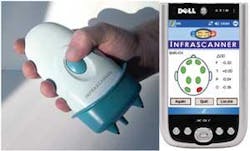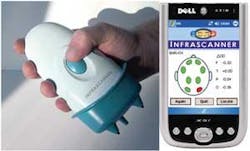End Result
Engineered algae makes biofuel
In a recent special issue focused on energy, Optics Express describes how scientists at the University of California, Berkeley, use microalgae to make biofuel. The researchers genetically modified the organisms so as to minimize the number of chlorophyll molecules needed to harvest light–without compromising the photosynthesis process in the cells. With this modification, instead of making more sugar molecules, the microalgae could produce hydrogen or hydrocarbons.
Microalgae are ideal for this task because their photosynthesis process is perhaps ten times more efficient than that of land plants–such as sugarcane, corn, and switchgrass–often discussed as possible biofuel stocks.
The researchers identified the genetic instructions in the algae genome responsible for deploying approximately 600 chlorophyll molecules in the cell’s light-gathering antennae. Believing that the algae can get along with as few as 130 molecules, they decided to divert the normal function of photosynthesis from generating biomass to making products such as lipids, hydrocarbons, and hydrogen.
Tasios Melis, a coauthor of the paper describing the work, uses the phrase “cellular optics” to describe this effort to maximize the efficiency of the solar-to-product conversion.
Portable scanner IDs brain injury fast
As was illustrated by the untimely death in March of English stage and screen actress Natasha Richardson after a skiing accident, failure to detect and treat intracranial hematoma (brain bleeding) within the first hour can have catastrophic effects. Ms. Richardson’s case is a high-profile example of a tragedy that strikes approximately two million Americans each year–too often resulting in severe neurological damage or death. Computed tomography (CT), the gold standard for diagnosing and pinpointing brain bleeding, is often unavailable or inaccessible–as was the case for Richardson. But a portable system, carried by emergency medical technicians for instance, could have diagnosed her properly and averted such a disastrous outcome.
That’s just the kind of help InfraScan aims to offer with its low-cost, portable near-IR (NIR) system. The start-up company, spearheaded by legendary laser-medicine pioneer and National Medal of Science winner Britton Chance–along with Claudia Robertson from the Baylor College of Medicine and an entrepreneurial team from Drexel University–hopes to fundamentally improve the way such injuries are evaluated.
Their Infrascanner takes just two minutes to scan a person’s head. The handheld, battery-operated unit evaluates the differential light absorption of the left versus right brain. Normally, light absorption is symmetrical. But when the brain suffers a hematoma, light absorption is increased while the reflected component is decreased in the affected area.
The setup consists of two parts: a sensor system and a personal digital assistant (PDA). The sensor includes an 808 nm diode laser placed 1.5 in. away from a silicon light detector, which is covered by an NIR optical filter. The laser illuminates the tissue by way of an optical fiber, and the detector reads the signal through a second fiber. (The separation between source and detector allows measurement of NIR absorbance in a volume of tissue about ¾ in. wide by just over an inch deep.) The system then digitizes the signal and transmits it wirelessly to the PDA.
Infrascanner received Europe’s CE mark this past fall, and recently completed multicenter clinical trials in the U.S. and abroad. Now it is awaiting FDA clearance. The company says that the same technology could be used to monitor patients with strokes and other blood-flow disorders.
For more information and a video see www.bioopticsworld.com/articles/343259/
“NIR [near infrared] system manufacturers will go big time when and if they agree on commonality in data points, resolution, linearization, analysis and pretreatment algorithms, etc. When the FDA can reproduce an assay with instrument 2 that was built on instrument 1, then they will treat NIR as they do HPLC [high-performance liquid chromatography–which enjoys widespread acceptance].”
–“NIRprof” Emil Ciurczak, a 27-year NIR veteran, speaking at Pittcon 2009

